Planting Japanese spirea and rules for caring for a shrub
The streets of cities in the summer are decorated with elegant alleys of Japanese spirea. Planting and caring for a spectacular shrub is usually straightforward. The plant is unpretentious, popular because of its long and picturesque flowering. Japanese spirea is increasingly planted in personal and suburban areas.
Description
Spirea, or meadowsweet, belongs to the Pink family. Its area of origin is Southeast Asia. The specific name of the plant (Greek "speira" - "bend" or "spiral") reflects the characteristic feature of the bush branches that bend smoothly. Among the many types of spirea, Japanese is one of the most elegant. Breeders have developed varieties of this plant, which are widely distributed due to ease of care and frost resistance.
Japanese spirea is a summer flowering shrub with pink, white and red-pink flowers. It grows up to 1-1.5 m, there are undersized varieties. Skeletal branches are short, long shoots extend from them. The leaves are small, oblong, elliptical with denticles at the edges. The leaf blades are bluish below, green above, picturesquely change color depending on the season. Shield-shaped inflorescences that open in different varieties from June to September are formed on young shoots. Bushes live up to 20 years.
Saplings often have poor flowering, but then the plants become surprisingly beautiful.
Varieties
The most common varieties are frost-resistant, which do not need shelter for the winter.
- Little princesses
Spirea Little Princesse is low, compact, grows up to 60 cm, the rounded crown extends to 1.2 m.Oval, rounded leaves are bright green in summer, turn yellow-orange by autumn. Numerous flat pink-red inflorescences, up to 4-5 cm in diameter. Spirea bush "little princess" in bloom is an elegant pink sphere. The plant develops very slowly.
- Golden Princesses
The compact spirea Japanese Golden Princess is a variety of the Little Princess variety, but this plant is low, up to 50 cm. The crown is wide, growing to 0.9-1 m. The peculiarity of the variety is the leaves, painted in a yellow tone, which changes with the season. The brightest color in spring, in summer the shade weakens, and in autumn it acquires a reddish soft color. The shrub pleases with a pink cloud of flowers in June and July.
- Shirobana
The bush of a low, compact spirea Shiroban, or Jenpey, reaches a height of 60-80 cm, crown width - 1-1.2 m. Narrow-lanceolate, saturated green leaves are small. Inflorescences with different colors on one bush: white and pink. Flowering time is July and August. During this period, the overgrown bush resembles a tricolor hemisphere.
- Goldflame
Spirea Goldflame is also low: up to 0.8-0.9 m with a crown width of 1-1.2 m. The plant is especially attractive in its oblong leaves that change color. In the spring, the leaf blades are red-orange, in the summer the shade weakens, turns yellow, and in the fall a copper tint appears. Moreover, in the depths of the bush, the leaves remain more greenish. Inflorescences are small, crimson, decorate the bush from July to September, by the end of flowering they turn purple.
- Anthony Vaterer
The compact dome-shaped bush of the Japanese spirea Antoni Vaterer grows up to 0.6-1 m, 0.8-1 m wide. The shoots grow vertically or hang slightly. Lanceolate leaves, blooming in spring, are painted in a red-burgundy color. In summer, the bush is bright green, in autumn it turns orange or acquires a rich shade of ceramics. Bright carmine inflorescences are large, up to 15 cm in diameter. Bloom for a long time, from late June to September.
Role in garden design
In the garden, Japanese spiraea stands out for its smooth curves, abundant flowering and contrasting shade of leaves.
- The shrub can stand alone as an eye-catching spot, or create great hedges for garden zoning.
- Japanese spirea is planted in compositions with other plants, near paths, buildings, flowering alleys are created.
- This type is easily combined with most decorative deciduous plants.
- Low varieties are used as ground cover.
- Excellent partners - spruce, juniper, thuja.
Japanese spirea takes root well in urban environments.
Reproduction
Spiraea is propagated using cuttings, dividing bushes, layering. The plant produces abundant root growth that can be dug up and transplanted. Separate 3-4-year-old bushes in the fall. Cuttings take root easily: 70% of the cut branches take root.
Cuttings from 1-year-old shoots of Japanese spirea are harvested before flowering or in September.
- The branch is cut into pieces with 5-6 leaves each.
- The lower leaves are removed, the remaining ones are cut in half.
- The cutting is placed in a solution of a rooting stimulator.
- Planted in a container at an angle of 45 degrees, create a mini-greenhouse.
- The planted cuttings are sprayed with water every day.
- For the winter, cuttings are instilled, and they are insulated with leaves on top.
For layering, the lower branch is bent down and its upper part is added dropwise, the top is cut off. The branch is watered to make it easier to form shoots from each side bud. In the fall, the processes are seated.
Growing
Japanese spirea prefers a sunny or partial shade area. Each plant needs at least 2-3 hours of direct sunlight. If the illumination of the bush is small, the leaves turn pale.
Spirea grows well on sandy loam or loam. Acidic soils color the leaves of the bush with bright shades. Japanese spirea is planted in autumn, late August - early September, or spring.
How to plant a bush?
Cloudy or rainy weather will be successful for planting shrubs.
- Dig a hole - it should be three times larger than the root system of the seedling.
- Drainage is laid below.
- Prepare a substrate for planting from 2 parts of sod or leafy soil, 1 part each of sand and peat.
- The substrate is mixed with a complex fertilizer for shrubs according to the instructions.
- The seedling is set so that the root collar is at ground level.
- The trunk circle is watered with 15–20 liters of water and mulched with a 7–8 cm layer of peat or other material.
When choosing a place for a spirea, you need to take into account the color of its leaves. Shrubs with light and yellow leaves will show their beauty in the sun. Plants with dark green leaves will thrive and flower in shaded areas.
How to care for a shrub?
For all its unpretentiousness, the bush requires attention to care. The root system of Japanese spirea is densely branched and widely distributed, but is close to the surface.
The plant needs moderate watering in hot weather: 15 liters of water are poured under each bush after 2 weeks. After watering, the soil is loosened, weeds are removed, and mulched.
The seedling is fed in the third year of growth, if fertilizers were applied at planting.
- In July, the best fertilizer for spirea will be 10 liters of mullein solution with added 10 g of superphosphate.
- Complex mineral fertilizers are applied after pruning.
Spirea, as a rule, does not get sick. When mites attack, the bush is sprayed with "Karbofos", and against aphids, the "Pirimor" agent is used.
Pruning
In the first days of spring, the tops are removed to strong buds. Weak, old and damaged branches are cut off completely. With strong pruning, powerful shoots grow over the summer. In the 5th year, the bush can be cut off, leaving only 20-30 cm from the ground.
The bush is formed in the third year after flowering - you can create nice spherical shapes or border rectangles from it. After pruning, the plants are watered.
The bright shrub, with careful care, will turn any corner of the garden or yard into an exquisite, stylish place for a good rest.
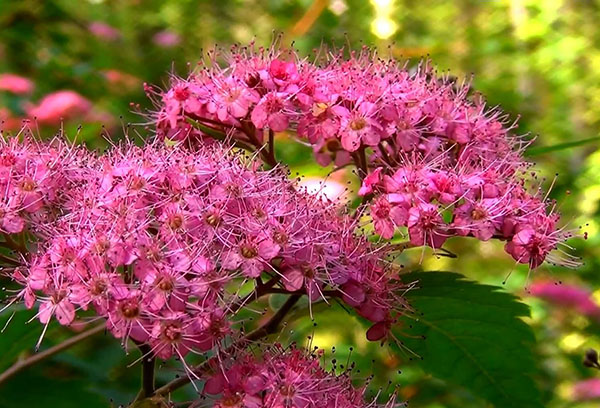
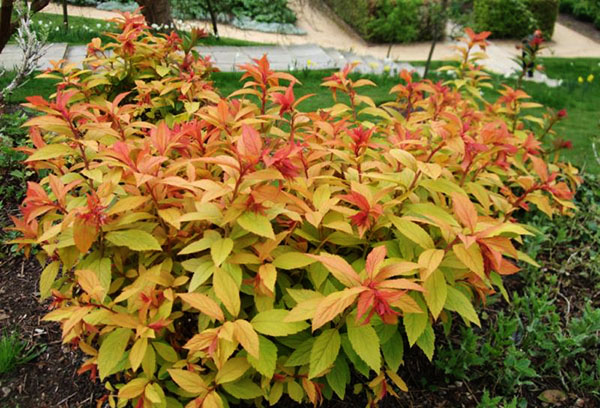
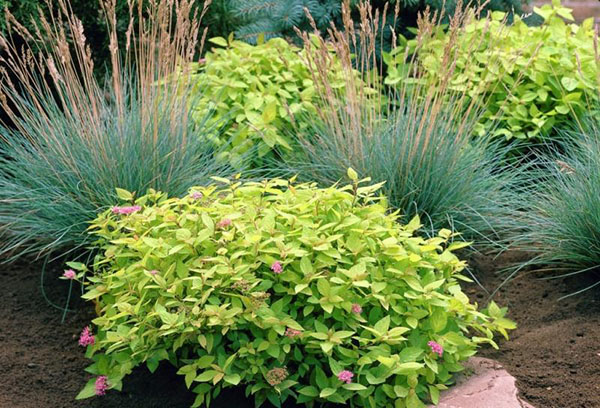
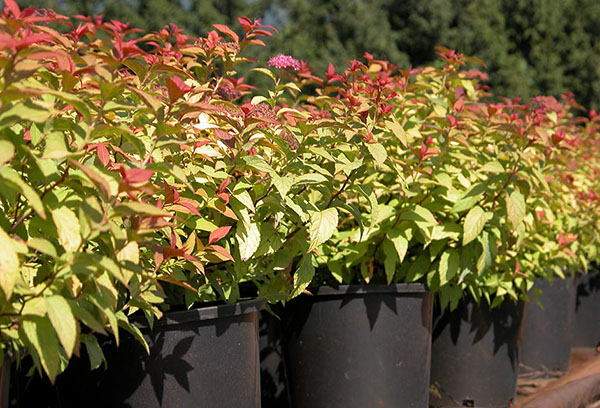
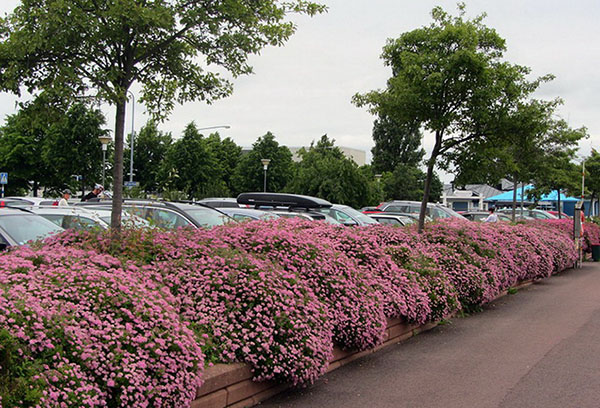
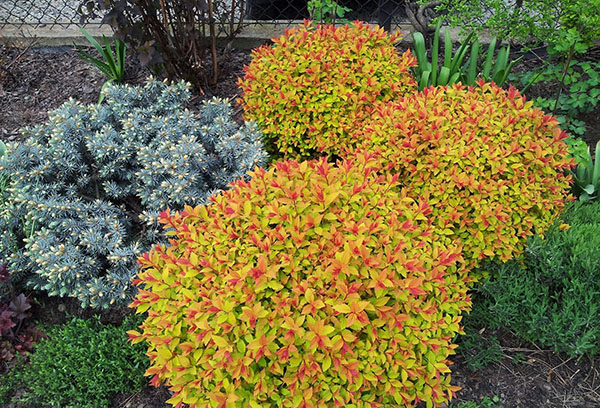

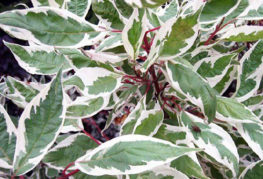
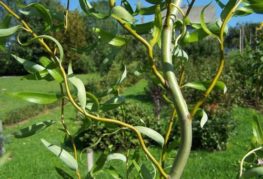
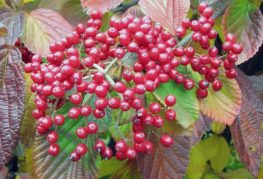
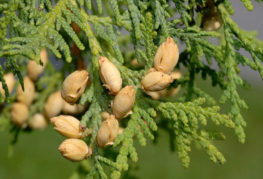
and will be published shortly.